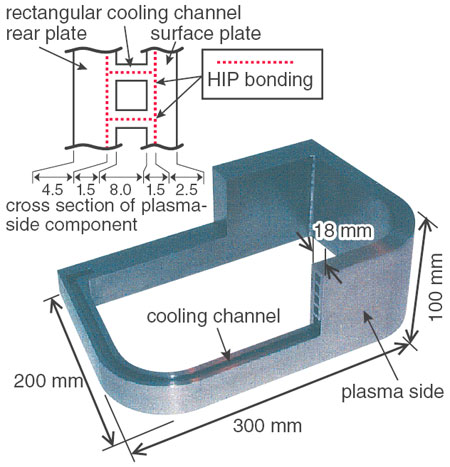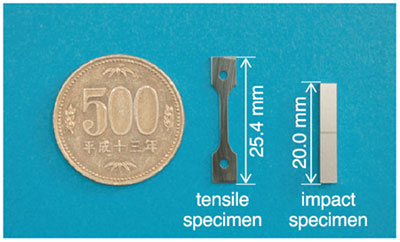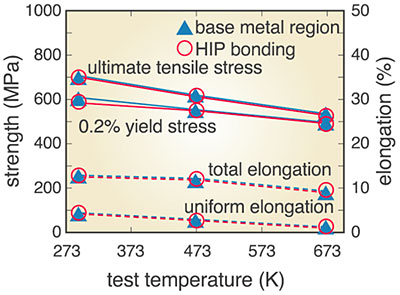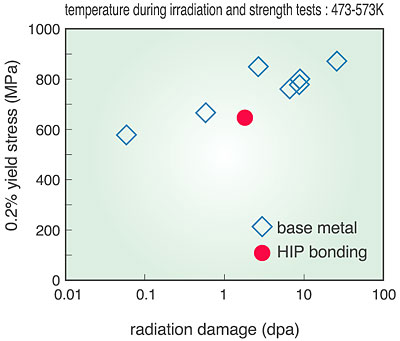The blanket installed in a fusion reactor will be exposed to high-energy neutrons from plasma. A ferritic steel (F82H steel), resistant to activation and radiation damage, has been selected as a candidate structural material (e.g. blanket) for demonstration reactor. The first wall components, which are also exposed to high heat flux, will have built-in cooling channels. Fabrication by welding of such a complicated structure is impractical, so the first wall components will be fabricated by the hot isostatic pressing (HIP)-bonding method, which can strongly join structural materials using high temperature and pressure. Various radiation experiments with F82H steel have been performed that simulated the effects of the fusion reaction. The material properties after irradiation are revealed in the base metal. However, tests are needed to elucidate the properties of HIP bonding.
In this study, a mock-up (Fig. 2-15) simulating a structural portion of a test blanket to be installed in ITER was fabricated by the HIP-bonding method (at 1313K with 150 MPa for 2 h). The metallurgical and mechanical properties before irradiation were first investigated using test specimens (Fig. 2-16) sampled from the HIP-bonded mock-up. The following significant characteristics were ascertained: (1) the HIP boundary contains precipitates equivalent to carbide-precipitates seen in matrix grain boundaries, (2) the strength and elongation of HIP-bonded joints are equivalent to those in base metal (Fig. 2-17), and (3) the brittle fracture that occurred at a part of the bonds between corners of the cooling channels and plates can be eliminated by re-heat treatment to refine grains in the metal. During the neutron irradiation conducted at the Japan Materials Testing Reactor (JMTR), the tensile properties were investigated. With irradiation up to ca. 2 dpa (ca. 70% of the accumulation during the total lifetime of the test blanket) at 523K, noticeable embrittlement occurs. Finally, (4) no fractures occurred at HIP boundaries, and few changes in properties appeared at the HIP bonds following irradiation (Fig. 2-18).
|



